Categories
Hot Products
pda android Barcode Scanner pda with rugged android smart terminal 2d barcode scanner pda14.0 handheld pda device model:HT518-F20 Android14 touch screen 4GB+64GB 5.45inch More
pos Android 5.5 Inch Android 12 NFC 1D 2D scanner Handheld pos Terminal 58mm Printer POS 3GB+16GB model:NB55 4G/3G/GPRS Android 12 5MP camera 5.5inch 3GB+16GB More
5.0 Inch Android 11 NFC 1D 2D Code Handheld Terminal Printer POS model:H8 4G/3G/GPRS Android 11 5MP camera 5.0inch More
Android14.0 Rugged Pda android Barcode Scanner pda handheld uhf rfid reader pdas scanner android pda model: HT518D-F7 Android 14.0 physical keypad 4GB+64GB 4inch More
android 12 Barcode Scanner pda with Reader 1D/2D scanner Android handheld pda device model:HT518-V350 Android12 3GB RAM + 32GB ROM 3.5nch More
4G Smart hard hat with Camera Live streaming camera for construction model:M3702-02A 4G/call/position/Hazard Alert/camera More
Android 14.0 Handheld pda 5.45inch PDA UHF RFID Reader scanner 21m Long Range rfid scanner Model:R20 4GB+64GB Android 14.0 Touch screen 5.45inch More
pda android scanner handheld rfid reader Android 12.0 Fingerprint Touch screen 5 inch Handheld pda barcode scanner android PDA handheld rfid reader price model:HT518-R7 Android 12.0 Zebra SE4710 5inch RAM 4GB+ROM64GB More
Our enquiry
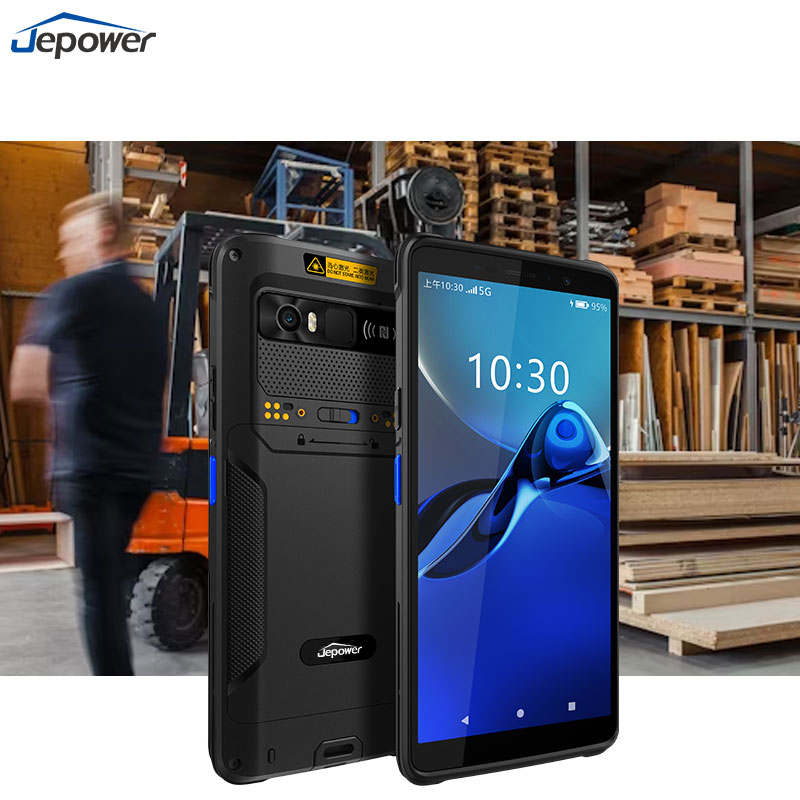
The Jepower F35 PDA is a 6-inch handheld device pda specifically designed for the warehouse and logistics industry, enhancing management efficiency and operational accuracy. Below are the key applications of the Jepower F35 PDA in warehouse logistics: 1. Efficient Inventory Management Quick Scanning: The Jepower F35 is equipped with a high-performance barcode scanner that can quickly read both 1D and 2D barcodes, helping warehouse staff accurately verify stock. Scanned data updates the inventory system in real-time, ensuring data synchronization and accuracy, reducing the risk of human errors. Real-time Data Sync: Utilizing Wi-Fi, 4G, and other wireless networks, the F35 can instantly transmit collected data to the Warehouse Management System (WMS), enabling full digital management and helping managers monitor inventory in real-time. 2. Flexible Order Processing Efficient Check-in and Check-out: Staff can scan product information with the F35 handheld device, quickly verify orders, and record the goods’ check-in or check-out status. This simplifies the entire logistics process and minimizes the risk of human errors. Batch Processing Capability: It supports batch scanning and input functions, making it ideal for large warehouses dealing with high-density product check-ins and check-outs, significantly boosting order processing efficiency. 3. Tracking and Inventory Auditing Parcel Tracking: During logistics transportation, the F35 PDA can scan and track parcel tracking numbers, allowing full monitoring of each stage of the parcel’s status. Real-time tracking ensures transparency of logistics information, aiding dispatch and monitoring. Quick Audits: During periodic inventory audits, the F35 offers fast and accurate audit tools. Staff can easily scan goods with the PDA, automatically updating the audit results, reducing manual intervention and shortening the audit time. 4. Rugged and Durable Design Industrial-grade Durability: The F35 is built with a rugged industrial design that is highly resistant to drops, dust, and water, making it suitable for operations in harsh environments. This durability ensures the device can operate reliably for long periods, reducing maintenance and replacement costs. Portability: The 6-inch screen offers excellent visibility while being easy to operate with one hand, making it ideal for warehouse and logistics personnel to carry and use at any time. 5. Multi-functional Integration Various Functional Modules: In addition to barcode scanning, the F35 integrates NFC (Near Field Communication) and GPS positioning, making it versatile for different logistics scenarios. NFC can be used for quick identity verification and item tracking, while GPS helps optimize logistics routes and track vehicles. 6. Long-lasting Battery Life High-capacity Battery: Warehouse logistics operations often require long hours of continuous work. The Jepower F35 is equipped with a large-capacity battery, supporting extended device operation and redu...
Jepower NB55 financial handheld POS terminal is a portable payment device widely used in various financial transaction scenarios, especially in industries such as catering, retail, and logistics. By integrating multiple payment methods and advanced communication technologies, it helps merchants achieve fast, secure payment processing while offering flexible mobile transaction services. Key Features: Multiple Payment Method Support: Bank Card Payments: Supports magnetic stripe cards, chip cards, and contactless card payments. Mobile Payments: Supports QR code payments (such as WeChat, Alipay), meeting the modern consumer's payment preferences. NFC Payments: Supports Near Field Communication (NFC) technology for payments such as Apple Pay, Google Pay, etc. Portable Design: The handheld POS terminal is compact and lightweight, easy to carry, and suitable for mobile payment needs. Whether at the dining table, in front of the shelf, or on a logistics site, merchants can complete transactions anytime, anywhere. High-Speed Communication: Supports multiple network connection methods, including Wi-Fi, 4G/5G, ensuring stable and fast data transmission during the payment process. Additionally, some devices feature Bluetooth connectivity, allowing connection to other devices such as printers or electronic scales. Security Assurance: The financial handheld POS terminal adopts strict financial encryption standards, such as PCI certification, to ensure the security of each transaction and prevent data leakage and fraud. Quick Response and Easy Operation: Equipped with a high-definition touchscreen and a simple interface, it provides quick response to user operations, reducing training costs and improving employee efficiency. Application Scenarios: Catering: Waitstaff can complete orders and payments at the table, reducing customer wait time and improving service efficiency. Retail: Suitable for small shops, street vendors, and other flexible payment scenarios, enabling merchants to conduct business conveniently. Logistics and Delivery: Delivery personnel can carry the POS machine to customers' doors to complete payments, reducing delays in the payment process and improving work efficiency. Mobile Services: Ideal for industries that require on-site services, such as housekeeping or beauty services, offering a convenient mobile payment experience that enhances customer satisfaction. Conclusion: The Jepower NB55 financial handheld POS terminal, with its portability, support for multiple payment methods, and robust security features, has become an essential tool in modern payment scenarios. It not only enhances operational efficiency for merchants but also provides consumers with a more convenient and secure payment experience.
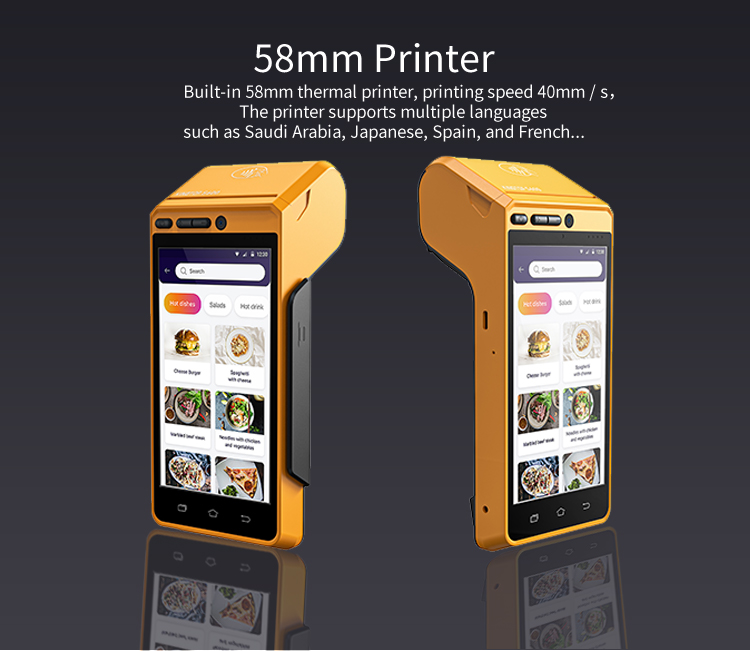
In the dynamic world of the restaurant industry, efficiency and customer satisfaction are paramount. The Jepower S600 Financial POS Terminal emerges as a powerful tool designed to streamline payment processes, making it an ideal choice for modern eateries. Key Features of the Jepower S600 Multi-Payment Support The S600 excels in versatility, supporting card payments and QR code scanning. This flexibility allows restaurants to cater to diverse customer preferences, enhancing the overall dining experience. Integrated 58mm Thermal Printer With its built-in 58mm thermal printer, the S600 can quickly print receipts and order confirmations on demand. This feature not only speeds up transactions but also minimizes clutter, keeping the checkout area organized. Compact and Stylish Design The S600's 5.5-inch display is not just functional; it adds a modern touch to any restaurant setting. Its sleek design allows it to fit seamlessly into both small cafes and larger dining establishments. User-Friendly Interface The intuitive touchscreen interface simplifies operations for staff, reducing training time and improving efficiency. Quick access to functions means servers can focus more on providing excellent customer service. Durability and Reliability Built to withstand the demands of a busy restaurant environment, the S600 is durable and reliable. Its robust design ensures it can handle the high transaction volumes typical in dining establishments. Applications in the Restaurant Industry In the fast-paced restaurant industry, speed and accuracy are crucial. The Jepower S600 addresses these needs by facilitating quick transactions and minimizing wait times. Whether it’s a busy lunch rush or a bustling dinner service, the S600 helps staff process payments efficiently, allowing them to focus on what matters most—customer satisfaction. Additionally, the ability to handle QR code payments appeals to tech-savvy diners, offering them a seamless payment option that enhances their overall experience.
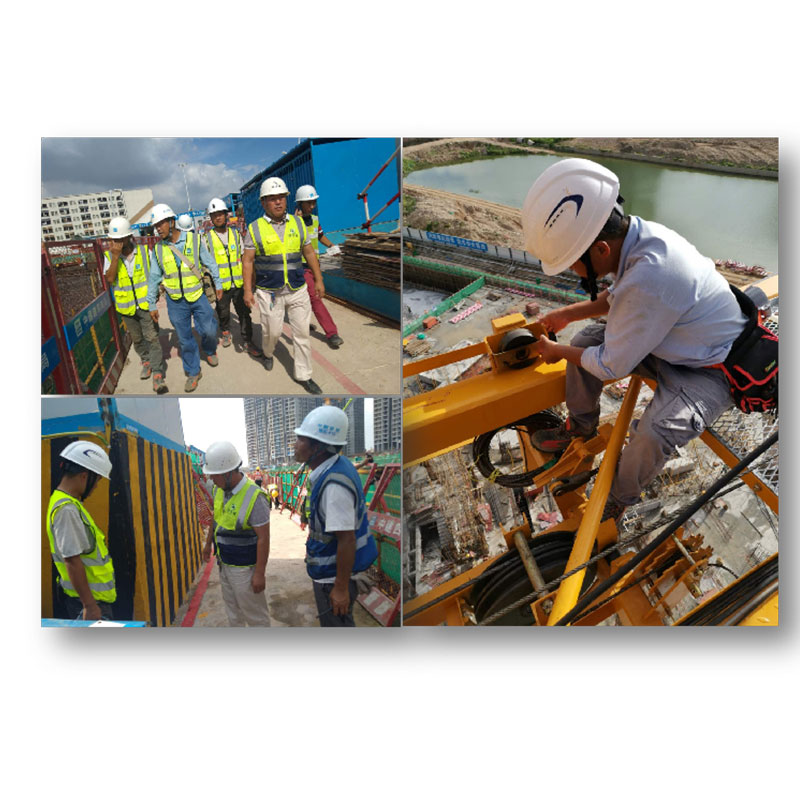
Smart helmets for mining workers are designed to enhance safety, communication, and operational efficiency in the often hazardous mining environment. These helmets integrate advanced technologies such as AI, sensors, and wireless communication to provide workers with real-time data and protection. Here are some key features and functions of smart helmets used in mining: Key Features: Real-time Monitoring: Equipped with sensors to monitor environmental conditions like temperature, gas levels (methane, carbon monoxide), and humidity, alerting workers to potential dangers. GPS & Communication: Built-in GPS tracking for locating workers in large mining sites. Wireless communication systems for instant reporting and coordination with the command center. Augmented Reality (AR) Display: Some helmets come with AR screens to display real-time operational data, work instructions, or emergency alerts directly in the worker’s field of vision. Health Monitoring: Sensors to track vital signs like heart rate and body temperature, ensuring workers are physically fit to continue working and alerting them of any potential health risks. Collision & Proximity Alerts: Designed to alert workers of nearby vehicles or heavy machinery to prevent collisions in noisy or low-visibility environments. Night Vision & Enhanced Lighting: Integrated with night vision cameras or powerful LEDs to improve visibility in dark or underground environments. Fall Detection & Emergency Alerts: Accelerometers detect falls or sudden impacts, automatically sending an emergency alert to the control center for immediate assistance. Benefits: Improved Safety: Early detection of hazardous conditions and immediate alerts can prevent accidents. Enhanced Productivity: Workers can access vital information without stopping work, enhancing productivity. Health Protection: Continuous health monitoring ensures workers aren’t exposed to dangerous conditions for prolonged periods. Better Communication: Seamless communication between workers and supervisors improves response times and coordination. These helmets are transforming the mining industry, making dangerous tasks safer while improving overall operational efficiency.

With the continuous advancement of technology, the application of smart devices is becoming increasingly widespread across various industries, and the power sector is no exception. As a key technology in the industrial field, Jepower AI smart helmets are gradually transforming traditional work practices in the power industry, enhancing both safety and efficiency. This article will explore the specific application scenarios of Jepower AI smart helmets in the power industry. 1. Real-Time Monitoring and Data Collection The working environment in the power industry is complex and fraught with potential hazards. Jepower AI smart helmets, equipped with various sensors, can monitor the worker's physical condition and the surrounding environment in real-time. For example, the smart helmet can track physiological data such as heart rate and body temperature, and if abnormalities are detected, the system immediately issues an alert to notify workers or management to take necessary action. Additionally, the helmet can monitor environmental factors like temperature and humidity, assisting workers in making informed decisions under harsh conditions and preventing issues like heatstroke and dehydration. 2. Augmented Reality (AR) Technology Support Work in the power industry often involves complex equipment operations and troubleshooting, especially during high-voltage cable maintenance and installation. Jepower AI smart helmets integrate augmented reality (AR) technology to provide workers with real-time operational guidance. For instance, while wearing the smart helmet, workers can view the internal structure of equipment, operation steps, and safety instructions on a display, significantly reducing the risk of operational errors. This functionality not only improves the accuracy of operations but also reduces training time, enabling new employees to quickly get up to speed with complex tasks. 3. Remote Video Communication and Technical Support During the repair of power equipment or handling of sudden faults, expert guidance on-site is often required. Jepower AI smart helmets come equipped with high-definition cameras and communication modules, allowing real-time video transmission. On-site workers can transmit the situation back to the command center via the smart helmet, where remote experts can provide immediate technical support based on the video feed. This remote assistance not only enhances fault handling efficiency but also reduces the cost and time associated with expert travel. 4. Safety Alerts and Location Tracking Safety is crucial in the power industry, and Jepower AI smart helmets offer robust safety alert functions. The helmet's built-in sensors can detect potential hazards in the surrounding environment, such as electromagnetic radiation and toxic gas, and issue warnings to alert workers to avoid dangerous areas. Additionally, the helmet is equipped with GPS tracking capabilities, enabling management to monitor workers' locations in real-time...
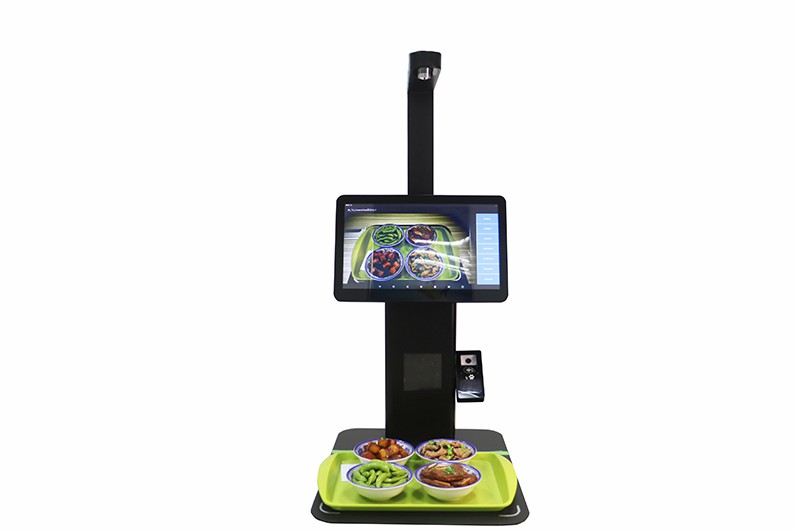
AI Desktop Smart Cash Register: Multifunctional Integration and Jepower Technology's Innovative Practice As the restaurant industry undergoes digital transformation, AI desktop smart cash registers have become essential tools for enhancing operational efficiency and optimizing customer experience. Jepower Technology, a leading company in this field, has successfully integrated multiple payment methods and printing functions into its innovative AI desktop smart cash register, providing an all-in-one intelligent solution for the restaurant industry. This article will introduce what an AI desktop smart cash register is and explore Jepower Technology's innovations in this area. What is an AI Desktop Smart Cash Register? An AI desktop smart cash register is a highly integrated intelligent terminal device specifically designed for the restaurant industry. It combines artificial intelligence, computer vision, IoT, and payment technologies to automatically recognize food items, process multiple payment methods, and support receipt printing. Its core features include: Automatic Food Recognition: Using computer vision technology, the device can automatically identify the food items on a tray, accurately calculate the price, and avoid errors caused by manual input. Multifunctional Payment: Supports various payment methods such as card swiping, facial recognition, QR code scanning, and palm scanning, meeting the diverse payment needs of customers and speeding up the checkout process. Integrated Printing Function: The device comes with a built-in printer, allowing for instant printing of receipts and orders, which facilitates customer inquiries and restaurant management. Jepower Technology's AI Desktop Smart Cash Register Jepower Technology's AI desktop smart cash register is a flagship product in the company's smart terminal portfolio. It integrates multiple advanced technologies into a single device, creating a fully functional and user-friendly smart cash register. Integration of Multiple Payment Methods Jepower Technology's smart cash register supports various payment methods, including card swiping, facial recognition, QR code scanning, and palm scanning. This diversity in payment options not only provides customers with more choices but also significantly improves checkout efficiency. For instance, facial recognition payments use AI to allow customers to complete transactions without carrying any physical items, while palm scanning leverages biometric technology by identifying hand vein patterns for secure and convenient payments. These innovative payment methods enhance the overall payment experience and increase security. Efficient Food Recognition and Data Processing The device utilizes advanced computer vision technology to accurately identify the food items on a tray within seconds and automatically calculate the total price. The system is trained using deep learning algorithms, ensuring accurate recognition even with complex and varied food combin...

In the era of digital transformation, industries are increasingly relying on advanced technological tools to streamline operations and improve efficiency. One such technological advancement is the industrial Android PDA (Personal Digital Assistant). These rugged, handheld devices have become indispensable tools in various sectors, including logistics, manufacturing, retail, and healthcare. This article explores the various types of Android PDAs, their applications, and the benefits they offer. What is an Industrial Android PDA? An industrial Android PDA is a portable handheld device designed for data collection, management, and communication in challenging environments. Unlike consumer-grade smartphones, these PDAs are ruggedized to withstand harsh conditions such as dust, water, extreme temperatures, and drops. They are equipped with robust operating systems, most commonly Android, which allows for easy integration with various enterprise applications. Key Features of Industrial Android PDAs Rugged Design: These devices are built to endure tough conditions. With features like IP65/IP67 ratings for water and dust resistance, reinforced screens, and shock-proof casings, they ensure durability in industrial settings. Barcode Scanning Capabilities: Many industrial PDAs come with built-in barcode scanners. An Android PDA barcode scanner is essential for inventory management, logistics, and retail sectors where quick and accurate data capture is crucial. UHF RFID Data Collection: Some models, like UHF RFID data collectors and portable UHF RFID devices, offer advanced capabilities for asset tracking, inventory management, and logistics. They can read multiple RFID tags simultaneously, increasing efficiency and reducing human error. High Battery Capacity: These devices are designed for long shifts and continuous use. High-capacity batteries ensure that the devices can function for extended periods without needing frequent recharges. Connectivity Options: With options like 4G, Wi-Fi, Bluetooth, and NFC, these PDAs offer multiple ways to stay connected and integrate with other systems, ensuring seamless data transfer and communication. Customizable and Versatile: Industrial PDAs are highly customizable, with options for different modules such as fingerprint scanners, infrared sensors, and thermal printers. This adaptability makes them suitable for various use cases. Applications of Android Handheld PDAs Warehouse Management: In warehouses, Android handheld PDAs with barcode scanning capabilities streamline inventory management by providing real-time updates on stock levels, order processing, and picking operations. Retail and Point of Sale (POS): Retailers use Android barcode PDAs for inventory checks, sales transactions, and customer management. The integration with point-of-sale systems helps in maintaining accurate stock records and improving customer service. Logistics and Transportation: Rugged PDAs are essential for managing delivery processes. Driv...
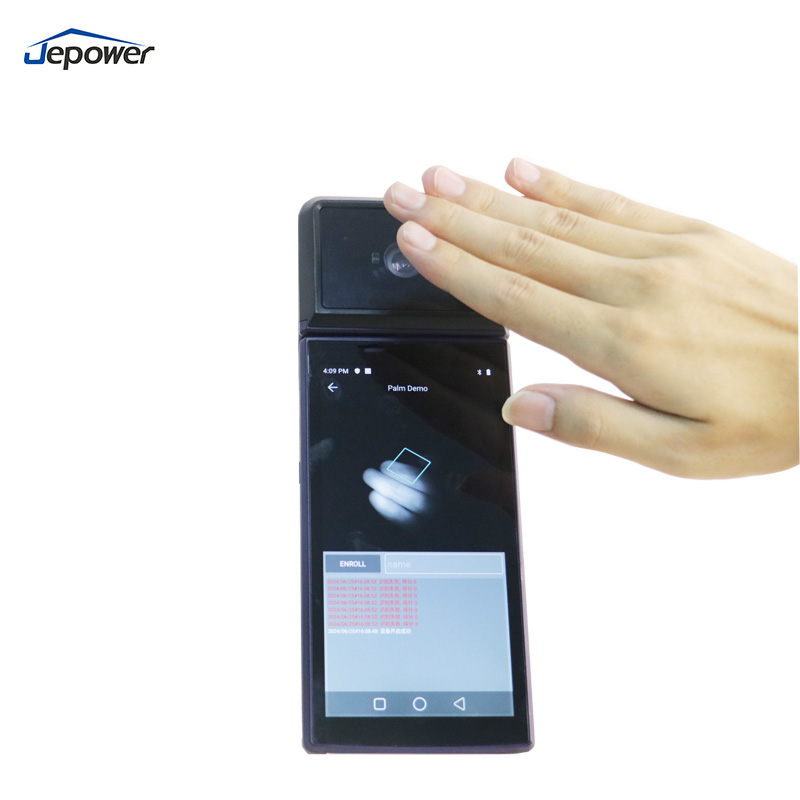
Palm payment is a payment method based on palm vein recognition technology. Unlike other biometric technologies such as fingerprint or facial recognition, palm payment verifies identity by recognizing the unique pattern of veins inside the palm. This technology offers higher security due to the uniqueness and difficulty of forging palm vein patterns. Advantages of Palm Payment High Security: The pattern of palm veins is difficult to replicate or steal, giving palm payment a significant advantage in preventing fraud and identity theft. Compared to traditional password or card payment methods, palm payment reduces users' security concerns. Contactless Payment: Palm payment is a contactless payment method, which is especially important in the current pandemic context. Users only need to place their palm near the scanning device without touching any surfaces, making it both hygienic and convenient. Efficiency and Convenience: Palm payment is fast, typically taking only about a second to complete the transaction. This efficiency is particularly beneficial in scenarios that require quick settlements, such as restaurants, supermarkets, and transportation hubs. Personalized Service: Since palm payment systems can record users' payment habits and preferences, businesses can use this data to provide more personalized services, such as customized discounts and intelligent recommendations. Application Scenarios forhttps://www.jepower.net/6-0-inch-payment-handheld-pos-device-android-9-nfc-1d-2d-scanner-handheld-pos-terminal-pos-2gb-16gb_p129.html Palm payment has a wide range of applications, covering various fields from retail and dining to transportation and healthcare. For example: Retail and Dining: Consumers can quickly complete their checkout through palm payment when shopping or dining, enhancing the smoothness of their shopping and dining experience. Transportation Payment: At subway stations, buses, and other transportation hubs, palm payment can greatly improve traffic efficiency and reduce queue times. Healthcare: Palm payment can be used in hospitals for registration and payment, providing patients with a more convenient healthcare service experience. Balancing Technology and Privacy Although palm payment has many advantages, there are also challenges in its promotion. Foremost among these is the issue of user privacy. While palm vein data is difficult to replicate, it still involves the collection and storage of personal biometric information. Ensuring the security and privacy of this data is a key consideration in the promotion of palm payment. To address these challenges, relevant companies and institutions are strengthening the application of data encryption technology and developing stricter data protection policies. Additionally, user education is crucial in helping consumers understand the safety and convenience of palm payment, thereby increasing its acceptance. Future Outlook With continuous technological advancements and growing consumer...
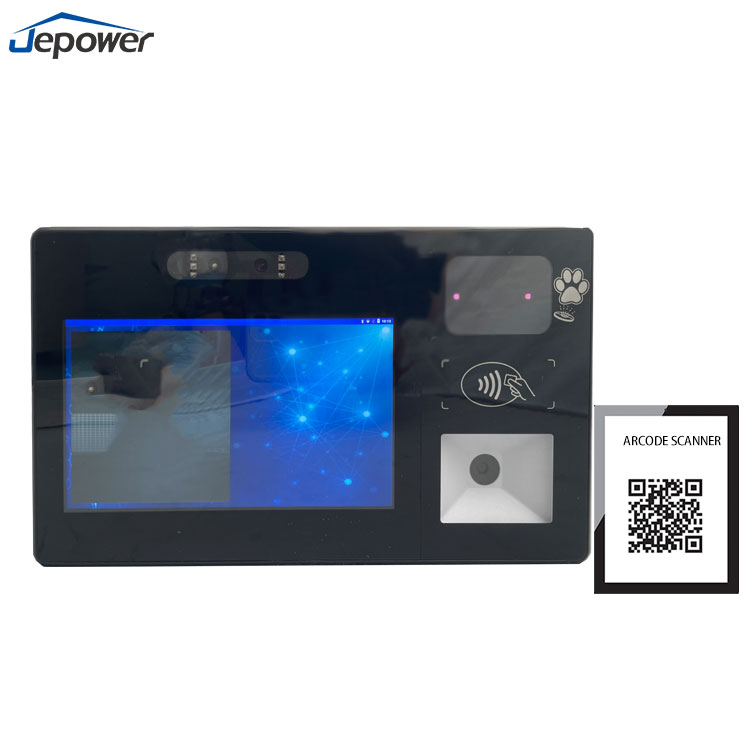
Under the wave of digital transformation, canteens, as an indispensable part of campus life and daily corporate operations, are undergoing profound changes. The introduction of Jepower's facial recognition payment system in canteens has not only significantly enhanced dining efficiency and convenience but also provided operators with a new smart management tool, achieving comprehensive upgrades from front-end payments to back-end management. 1. A Revolution in Payment Method Diversification As a hallmark of modern canteens, Jepower's facial recognition payment system integrates four mainstream payment methods: QR code scanning, card swiping, facial recognition, and palm scanning. This system has completely transformed the cumbersome processes of traditional canteens, such as queuing, waiting, and cash handling. Diners can now complete payments instantly by scanning a QR code via a mobile app, swiping a card, or using facial or palm recognition, greatly reducing waiting time and significantly improving dining efficiency. 2. Real-time Settlement and Data-driven Operational Optimization For canteen operators, Jepower's facial recognition payment system is not just a payment tool but also a powerful data collection and analysis platform. The system can record every transaction in real-time and enable fast settlement, avoiding the complexities and errors associated with traditional manual reconciliation. More importantly, operators can use big data analysis to gain deep insights into diners' consumption habits, dish preferences, and peak dining times, providing scientific support for decisions on menu adjustments, inventory management, and staff allocation, thereby achieving precise operational optimization. 3. Personalized Service and Nutritional Guidance Jepower's facial recognition payment system is also equipped with a customer display screen, an innovative feature that enhances interaction during the payment process and plays a positive role in promoting healthy eating. Each time a diner completes a payment, the screen instantly displays the nutritional information of the purchased dishes, such as calorie content, protein, fat, and vitamin levels, providing diners with clear and immediate health references and supporting personalized dietary choices. Conclusion The application of Jepower's facial recognition payment system in canteens is not just an upgrade of payment methods but a comprehensive overhaul of canteen management processes. By seamlessly integrating front-end payments with back-end management, data becomes the key driver of efficient canteen operations. The use of intelligent technology makes canteen operations more efficient and precise, offering diners a more convenient and personalized service experience. This not only marks a significant step in the digital transformation of canteens but also lays a solid foundation for the construction of future smart canteens.

Exploring Rugged Tablets and Industrial PDAs: The Future of Industrial Technology In the rapidly evolving landscape of industrial technology, rugged tablets and industrial PDAs (Personal Digital Assistants) have become essential tools for businesses and industries requiring reliable, durable, and efficient mobile computing solutions. These devices, equipped with advanced features such as RFID handheld readers, 5G connectivity, and robust operating systems like Android, are transforming how industries operate. This article delves into the significance of rugged tablets, industrial PDAs, and their cutting-edge capabilities, providing insights into their applications and benefits. Rugged Tablets: The Backbone of Industrial Computing Rugged tablets are designed to withstand harsh environments and challenging working conditions, making them ideal for industries such as manufacturing, logistics, construction, and field services. These devices are built with reinforced casings, shock-resistant screens, and are often rated for protection against dust, water, and extreme temperatures. The rugged tablet industrial design ensures that these devices can perform reliably in demanding situations, reducing downtime and increasing productivity. One of the key features of a rugged tablet is its RFID handheld reader capability. This technology allows for seamless tracking and management of inventory, assets, and personnel. By integrating RFID into rugged tablets, industries can automate data collection processes, minimize errors, and enhance operational efficiency. The Power of Android in Industrial Tablets The adoption of the Android operating system in rugged tablets and industrial PDAs has revolutionized their functionality. Rugged tablet Android devices offer a familiar and user-friendly interface, allowing for easy integration with existing software applications. The open-source nature of Android also enables customization, making it easier for industries to tailor these devices to their specific needs. Moreover, the availability of 10-inch Android tablets provides a balance between portability and screen size, making them suitable for various industrial applications. These tablets offer enough screen real estate to display detailed information, such as schematics, maps, and data entry forms, while remaining compact and easy to handle. 5G Connectivity: The Future of Industrial Tablets With the advent of 5G technology, industrial tablets are now equipped with faster and more reliable connectivity. Tablet industrial 5G devices enable real-time data transfer, remote monitoring, and seamless communication between field workers and central systems. This enhanced connectivity is particularly beneficial in industries where time-sensitive data is crucial, such as emergency services, logistics, and manufacturing. 5G-enabled rugged tablets also support advanced applications like augmented reality (AR) and Internet of Things (IoT) integrations, further expanding their u...
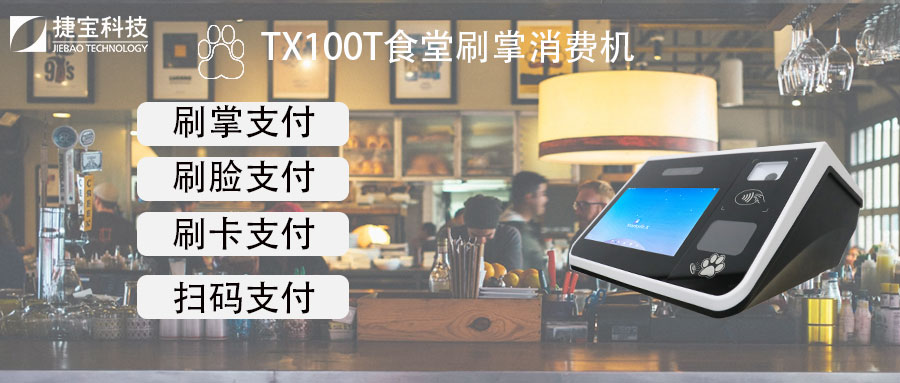
The Jepower Palm Swipe Payment Device is a cutting-edge solution designed to streamline payment processes in various settings such as school cafeterias, corporate dining facilities, and public canteens. Below are the detailed features and benefits of the device: Key Features Advanced Palm Recognition Technology: Utilizes sophisticated palm recognition technology for secure and reliable identification. Ensures high accuracy and speed in recognizing users, enhancing the payment experience. Contactless Payment: Promotes a hygienic payment method by eliminating physical contact, reducing the risk of cross-contamination. Especially beneficial during public health concerns such as pandemics. Efficient Management: Integrates with backend management systems to facilitate account management, including top-ups and transaction history tracking. Can be seamlessly connected with school or corporate management systems for synchronized data and efficient management. Multifunctional Integration: Besides payment, it can incorporate functions like attendance tracking and access control, offering a comprehensive solution. Enhances overall operational efficiency with integrated smart management capabilities. User-Friendly Experience: Simple operation where users can complete payments by swiping their palm over the device. Supports multiple payment methods such as QR code payments and IC card payments, catering to diverse user preferences. Applicable Scenarios School Canteens: Increases student dining efficiency, reduces queue times, and improves canteen management. Corporate Cafeterias: Offers employees a convenient payment experience and boosts corporate efficiency. Public Canteens: Suitable for various public dining facilities such as hospitals and factories, enhancing payment speed and security. Installation and Maintenance Jepower provides comprehensive installation guidance and after-sales service to ensure the proper functioning and maintenance of the device. Regular system updates and maintenance are conducted to guarantee security and stability. Contact Information For more information or to inquire about purchasing the Jepower Palm Swipe Payment Device, you can visit the Jepower official website or contact their sales and customer service team through the following channels: Official Website: https://www.jepower.net Contact Phone: Specific contact details can be found on the contact page of their official website. Through these avenues, you can access detailed product information, pricing, and purchase consultations.
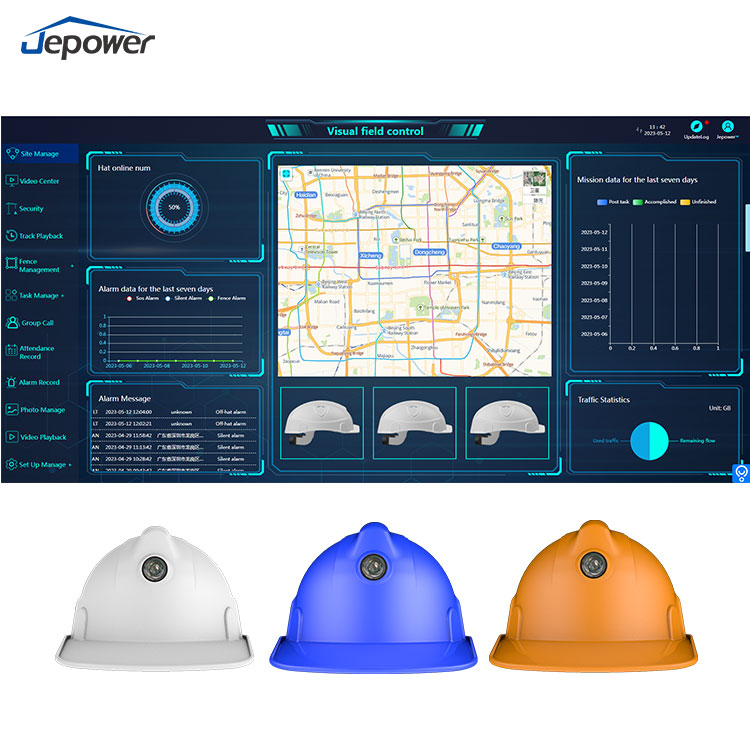
Smart helmets are devices that integrate multiple advanced technologies, designed to enhance safety and management efficiency at construction sites. They are typically equipped with sensors, positioning systems, communication modules, and augmented reality (AR) functions to enable comprehensive monitoring and management of workers and the construction environment. Real-time Monitoring and Data Collection: Smart helmets are equipped with sensors that can monitor workers' physiological conditions (such as heart rate, body temperature) and environmental parameters (such as temperature, humidity, concentration of harmful gases) in real-time. This data is transmitted to the central management system through wireless transmission technologies (such as Bluetooth, Wi-Fi), helping managers to understand the on-site situation promptly and ensure worker safety. Positioning and Trajectory Tracking: Smart helmets have built-in GPS or other positioning technologies to achieve precise positioning and trajectory tracking of workers. This is particularly important for large construction projects, where managers can grasp workers' locations in real-time, optimize resource allocation, and improve work efficiency. Voice Communication and Alarm Functions: Smart helmets are equipped with voice communication systems, allowing workers to communicate with managers in real-time, enhancing collaboration efficiency. Additionally, when detecting dangerous situations (such as high temperatures, gas leaks), the helmet will automatically send out an alarm signal, reminding workers to take timely evasive actions. Augmented Reality (AR) Functions: Some smart helmets integrate AR technology, which can provide workers with construction guides, operational steps, and other information through head-mounted displays. This helps workers complete tasks more accurately and reduce human errors. Work Hours Recording and Attendance Management: Smart helmets can automatically record workers' working hours, avoiding the drawbacks of traditional manual clocking and improving the accuracy and efficiency of attendance management. Accident Recording and Analysis: In the event of an accident, smart helmets can record the time, location, and environmental parameters of the incident, providing detailed data for post-incident analysis. This helps companies identify the causes of accidents, formulate improvement measures, and prevent similar incidents from occurring again. Through these functions, smart helmets offer significant advantages in enhancing safety assurance, optimizing management processes, and improving construction efficiency, making them an essential device in modern infrastructure construction projects.
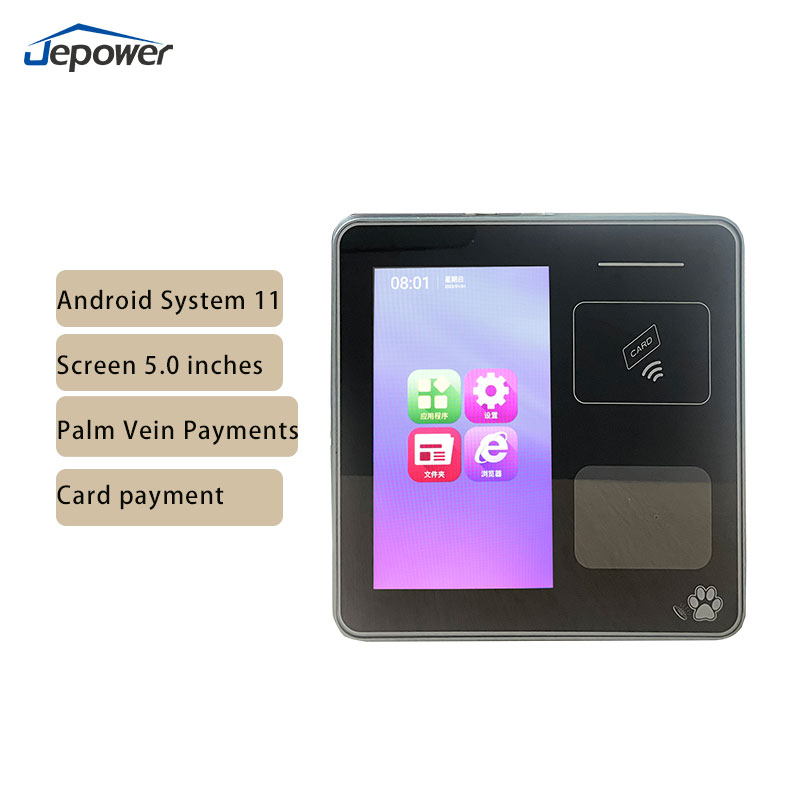
TX100T is an advanced desktop payment device designed specifically for high security and convenience needs in application scenarios. This device utilizes palm print and palm vein pattern recognition technology to provide users with a fast, secure, and contactless payment solution. main features High precision recognition: Adopting advanced palm print and vein recognition algorithms to ensure accuracy and security of recognition. Fast recognition speed, usually completing payment verification within one second. Non contact operation: Users only need to hover their palms above the device to complete recognition and payment, reducing physical contact and meeting hygiene requirements. High security: The palm print and palm vein pattern are unique and difficult to replicate and forge. Encrypt data transmission and storage to ensure the security of user information. User friendly interface: The device is equipped with a clear touch screen interface, making it easy and intuitive to operate. Support multilingual interfaces to meet the usage needs of different countries and regions. Multifunctional integration: Supports integration with various payment systems and platforms, with strong compatibility. It can be linked with access control, attendance and other systems to achieve multi scenario applications. TX100T desktop palm swiping payment device Product advantages High precision recognition: Palmprint and vein recognition technology, accurate and safe. Non contact operation: No need to touch the device, hygienic and safe. User friendly: Simple and intuitive operation interface. Multi functional integration: compatible with multiple payment systems and platforms. Application scenarios Retail industry: cash registers in shopping malls and supermarkets. Catering industry: payment systems for restaurants and cafes. Office premises: internal cafeteria and cafeteria of the enterprise. Medical institutions: payment windows for hospitals and clinics. Public transportation: subway and bus ticketing systems. Entertainment venues: Consumption payments for amusement parks and cinemas. TX101 channel type palm brushing device Product advantages Efficient passage: Quickly identify and improve passage efficiency. Non contact operation: No physical contact is required, reducing the risk of cross infection. Durable and sturdy: suitable for high-frequency usage environments. Multi functional integration: compatible with access control, attendance, and payment systems. Application scenarios Office building: Access control for employees and visitors. Transportation hub: security and ticketing systems at airports and train stations. School: Access management for students and faculty. Large scale events: personnel management for conferences and exhibitions. Gym: Member access control. TX700 embedded palm swiping payment device Product advantages Flexible installation: Suitable for embedded design in various devices and locations. High precision recognition: Palmprint a...
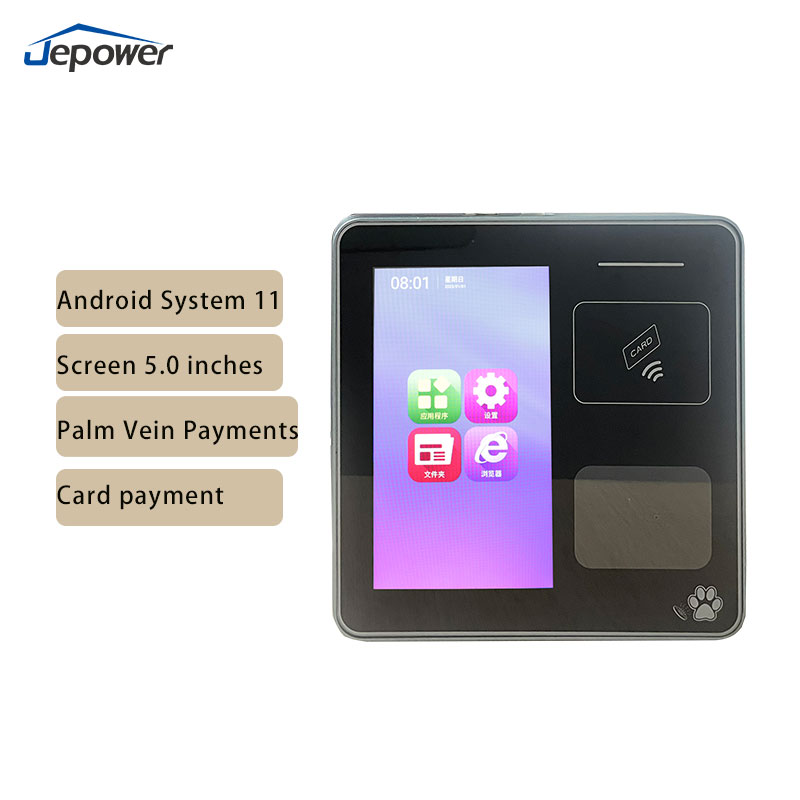
TX100T is an advanced desktop payment device designed specifically for high security and convenience needs in application scenarios. This device utilizes palm print and palm vein pattern recognition technology to provide users with a fast, secure, and contactless payment solution. main features High precision recognition: Adopting advanced palm print and vein recognition algorithms to ensure accuracy and security of recognition. Fast recognition speed, usually completing payment verification within one second. Non contact operation: Users only need to hover their palms above the device to complete recognition and payment, reducing physical contact and meeting hygiene requirements. High security: The palm print and palm vein pattern are unique and difficult to replicate and forge. Encrypt data transmission and storage to ensure the security of user information. User friendly interface: The device is equipped with a clear touch screen interface, making it easy and intuitive to operate. Support multilingual interfaces to meet the usage needs of different countries and regions. Multifunctional integration: Supports integration with various payment systems and platforms, with strong compatibility. It can be linked with access control, attendance and other systems to achieve multi scenario applications. TX100T desktop palm swiping payment device Product advantages High precision recognition: Palmprint and vein recognition technology, accurate and safe. Non contact operation: No need to touch the device, hygienic and safe. User friendly: Simple and intuitive operation interface. Multi functional integration: compatible with multiple payment systems and platforms. Application scenarios Retail industry: cash registers in shopping malls and supermarkets. Catering industry: payment systems for restaurants and cafes. Office premises: internal cafeteria and cafeteria of the enterprise. Medical institutions: payment windows for hospitals and clinics. Public transportation: subway and bus ticketing systems. Entertainment venues: Consumption payments for amusement parks and cinemas. TX101 channel type palm brushing device Product advantages Efficient passage: Quickly identify and improve passage efficiency. Non contact operation: No physical contact is required, reducing the risk of cross infection. Durable and sturdy: suitable for high-frequency usage environments. Multi functional integration: compatible with access control, attendance, and payment systems. Application scenarios Office building: Access control for employees and visitors. Transportation hub: security and ticketing systems at airports and train stations. School: Access management for students and faculty. Large scale events: personnel management for conferences and exhibitions. Gym: Member access control. TX700 embedded palm swiping payment device Product advantages Flexible installation: Suitable for embedded design in various devices and locations. High precision recognition: Palmprint a...

As Industry 4.0 progresses, smart technologies are becoming widely integrated across various sectors, and steel plants are no exception. Steel plants are high-risk work environments, and ensuring worker safety has always been a top priority for management. Smart safety helmets, a cutting-edge technological advancement, are gradually becoming a crucial tool in enhancing safety management in steel plants. This article explores the applications and multifaceted benefits of smart safety helmets in steel plants. Core Functions of Smart Safety Helmets Real-time Monitoring Smart safety helmets are equipped with high-definition cameras and various sensors that can monitor workers' statuses and environmental conditions in real-time. These data are transmitted wirelessly to a central control room, where management personnel can monitor and analyze them. In case of anomalies, such as worker falls or extreme temperature conditions, the system automatically triggers alarms, alerting the relevant personnel to take immediate action. Environmental Detection Environmental detection is crucial in steel plants, characterized by high temperatures, pressures, and harmful gases. Smart safety helmets are equipped with gas sensors that continuously monitor the concentration of hazardous gases such as carbon monoxide and hydrogen sulfide. When the concentration of these gases exceeds safe levels, the helmets emit warnings, advising workers to evacuate dangerous areas promptly. Position Tracking Equipped with GPS functionality, smart safety helmets can track workers' locations in real-time. This feature is particularly important in large steel plants, where workers are distributed across various production stages. In emergencies, the tracking system helps management quickly locate workers and execute timely rescues. Communication Capabilities Integrated communication devices within the helmets allow workers to communicate with each other at any time. Whether for daily work coordination or emergency response, this feature significantly improves efficiency by reducing information transmission time and enhancing overall collaboration. Fatigue Monitoring Prolonged high-intensity work can lead to worker fatigue, increasing the risk of accidents. Smart safety helmets monitor physiological indicators such as heart rate and body temperature to determine if a worker is excessively fatigued. When fatigue is detected, the system automatically prompts the worker to rest, preventing accidents caused by overexertion. Smart hard hat refined management backend Enhanced Safety The combination of real-time monitoring and environmental detection functions can promptly identify and warn against potential hazards, reducing the incidence of accidents. The integration of environmental detection, real-time monitoring, and position tracking ensures comprehensive protection for workers in the complex and variable environment of steel plants. Improved Efficiency The positioning and communication ca...

A smart helmet is an advanced safety equipment that integrates multiple technological functions, commonly used in high-risk work environments such as construction sites, mines, and manufacturing industries. Its main features include real-time monitoring, environmental sensing, communication, and data recording. Here are some key functions of smart helmets: Environmental Monitoring: Equipped with sensors to monitor harmful gases, temperature, humidity, and other parameters in the environment to ensure workplace safety. Real-time Communication: Built-in communication modules, such as Bluetooth and Wi-Fi, allow for real-time communication with other devices or control centers, facilitating the handling of emergency situations. Positioning Function: Utilizes GPS or other positioning technologies to track the wearer’s location in real time, especially suitable for scenarios requiring precise positioning. Camera and Video Recording: Integrated cameras can record real-time videos of the worksite, enabling remote monitoring and post-event review. Health Monitoring: Equipped with biosensors to monitor the wearer's vital signs, such as heart rate and body temperature, to promptly detect health issues. Applications of Smart Helmets on Ships 1. Crew Safety Monitoring On ships, smart helmets can be used to monitor the work environment and health status of the crew. Real-time data transmission allows for the timely detection and handling of potential safety hazards and health issues. For instance, in enclosed or confined ship compartments, the helmet can monitor oxygen levels and the presence of harmful gases, ensuring the crew's safety. 2. Emergency Response Smart helmets can play a crucial role in emergencies. With real-time positioning features, ship managers can quickly locate crew members for timely rescue operations. Additionally, the built-in communication system can help crew members stay in contact with the control center during emergencies, improving response efficiency. 3. Remote Monitoring and Management Ship managers can use the data collected by smart helmets to monitor the working conditions and environment of the crew in real-time. This helps improve management efficiency by promptly identifying and addressing issues. For example, during maintenance and repair tasks, managers can use the video function to remotely view the site conditions and ensure that work is carried out according to standards. 4. Data Recording and Analysis Smart helmets can record a vast amount of data that can be used for post-event analysis and workflow improvements. By analyzing environmental data from the crew's work conditions, potential safety hazards can be identified and preventive measures taken. Long-term health data monitoring can help formulate more reasonable work schedules to ensure crew health. Practical Application Cases Some modern ships have begun to experiment with the use of smart helmets in daily operations and management. For example, certain Norwegia...

With the rapid development of technology, the healthcare sector continuously seeks new technological means to enhance the efficiency and quality of medical services. Handheld PDAs (Personal Digital Assistants), as portable smart devices, have gradually become important tools in the healthcare sector due to their powerful data processing and communication capabilities. This article explores the specific applications of handheld PDAs in the healthcare sector and the advantages they bring. 1. Features and Technological Characteristics of Handheld PDAs Data Collection and Management Handheld PDAs are equipped with various input devices such as barcode scanners, RFID readers, and cameras, enabling rapid and accurate collection of patient information, medication data, and equipment status. This information can be transmitted in real-time to hospital information systems via wireless networks. Communication and Collaboration Handheld PDAs feature wireless communication capabilities, allowing healthcare professionals to communicate and collaborate in real-time using Wi-Fi, Bluetooth, 4G/5G, and other networks. This facilitates the timely sharing of patient conditions, treatment plans, and examination results among medical staff. Mobile Office Healthcare professionals can access and update electronic medical records (EMRs), appointment information, surgical schedules, and other data anytime and anywhere using handheld PDAs, greatly enhancing work efficiency and flexibility. 2. Application Scenarios of Handheld PDAs in the Healthcare Sector Patient Management Patient Information Collection: Upon admission, healthcare staff can quickly scan patients' ID cards and insurance cards using handheld PDAs to input basic information and generate electronic medical records. Bedside Care: Nurses can scan patients' wristband barcodes using handheld PDAs to confirm patient identities and perform nursing operations such as medication administration, wound dressing, and vital signs recording at the bedside. Mobile Ward Rounds: Doctors can carry handheld PDAs during ward rounds to access and update patient medical records, examination results, and treatment plans in real-time, thereby improving diagnosis and treatment efficiency and accuracy. Medication Management Medication Inventory and Dispensing: Pharmacy staff can use handheld PDAs to scan medication barcodes for rapid inventory management and dispensing, with real-time updates to inventory data. Medication Safety: By scanning patient wristband and medication barcodes, handheld PDAs can verify medication information, ensuring accurate administration and reducing medication errors. Medication Traceability: Handheld PDAs can record the entire process of medication flow, enabling full traceability of medication batches to ensure medication quality and safety. Medical Equipment Management Equipment Status Monitoring: Healthcare staff can scan equipment barcodes or RFID tags using handheld PDAs to record and query equipmen...
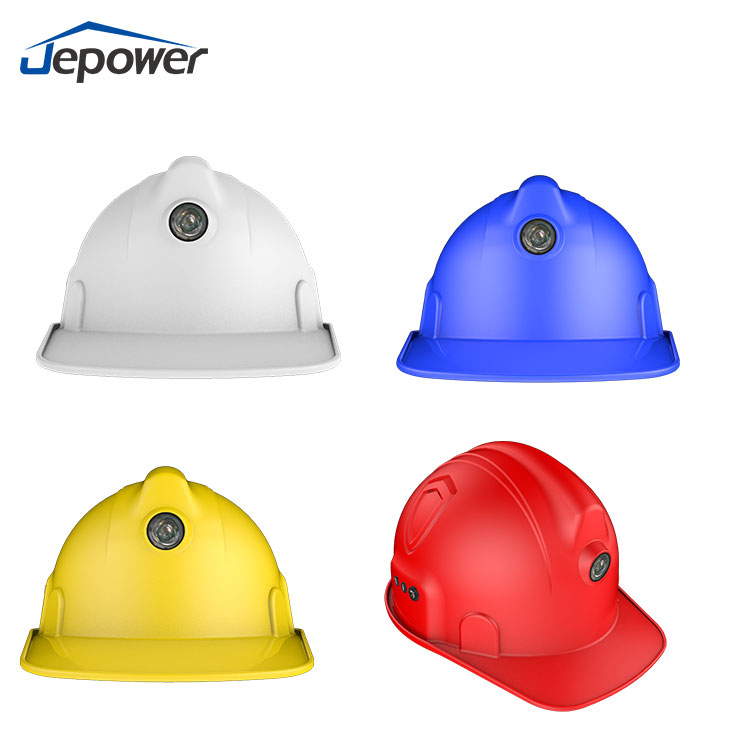
The oil and gas industry has always faced high-risk working environments, including flammable and explosive gas leaks, high-temperature and high-pressure equipment operations, and complex fieldwork conditions. Therefore, effectively enhancing worker safety and work efficiency has become a crucial issue in this industry. In recent years, with technological advancements, smart helmets have gradually become an effective tool to address this problem. This article will explore the specific applications of smart helmets in the oil and gas industry and the advantages they bring. I. Functions and Technical Features of Smart Helmets Smart helmets combine the protective functions of traditional helmets with modern technological features, including the following aspects: Sensor Technology: Smart helmets are equipped with various sensors such as gas sensors, temperature sensors, and humidity sensors to monitor the changes in the environment around workers in real-time. Positioning System: Utilizing GPS and other positioning technologies, they track workers' positions in real-time, ensuring quick location and rescue in emergency situations. Cameras and Communication Devices: Built-in cameras and microphones enable real-time transmission of on-site video and audio through wireless networks, facilitating remote guidance and monitoring. Data Analysis: Through data collection and analysis platforms, they record workers' operational statuses and environmental data, assisting management in decision-making and risk assessment. II. Application Scenarios of Smart Helmets in the Oil and Gas Industry Hazardous Gas Detection and Warning In the extraction and processing of oil and gas, there is often the risk of harmful gas leaks such as methane and hydrogen sulfide. Smart helmets, through their built-in gas sensors, monitor the concentration of harmful gases in the air in real-time. When anomalies are detected, they immediately sound an alarm, prompting workers to evacuate the dangerous area quickly while notifying the command center to take emergency measures. On-site Monitoring and Remote Guidance Production operations in the oil and gas industry often take place in remote areas, making it impossible for management to be on-site at all times. The cameras and communication devices in smart helmets can transmit real-time footage and audio from the site to a remote command center. Experts can use this data to guide workers remotely, ensuring that tasks are performed according to standard procedures, thereby reducing the risk of operational errors. Worker Positioning and Emergency Rescue During operations on oil platforms or in oil fields, workers are spread over vast areas. The positioning function of smart helmets can track each worker's location in real-time. In case of emergencies such as explosions, fires, or injuries, the command center can quickly locate and dispatch rescue teams, reducing rescue time and improving rescue efficiency. Equipment and Environmental Moni...

The oil and gas industry has always faced high-risk working environments, including flammable and explosive gas leaks, high-temperature and high-pressure equipment operations, and complex fieldwork conditions. Therefore, effectively enhancing worker safety and work efficiency has become a crucial issue in this industry. In recent years, with technological advancements, smart helmets have gradually become an effective tool to address this problem. This article will explore the specific applications of smart helmets in the oil and gas industry and the advantages they bring. I. Functions and Technical Features of Smart Helmets Smart helmets combine the protective functions of traditional helmets with modern technological features, including the following aspects: Sensor Technology: Smart helmets are equipped with various sensors such as gas sensors, temperature sensors, and humidity sensors to monitor the changes in the environment around workers in real-time. Positioning System: Utilizing GPS and other positioning technologies, they track workers' positions in real-time, ensuring quick location and rescue in emergency situations. Cameras and Communication Devices: Built-in cameras and microphones enable real-time transmission of on-site video and audio through wireless networks, facilitating remote guidance and monitoring. Data Analysis: Through data collection and analysis platforms, they record workers' operational statuses and environmental data, assisting management in decision-making and risk assessment. II. Application Scenarios of Smart Helmets in the Oil and Gas Industry Hazardous Gas Detection and Warning In the extraction and processing of oil and gas, there is often the risk of harmful gas leaks such as methane and hydrogen sulfide. Smart helmets, through their built-in gas sensors, monitor the concentration of harmful gases in the air in real-time. When anomalies are detected, they immediately sound an alarm, prompting workers to evacuate the dangerous area quickly while notifying the command center to take emergency measures. On-site Monitoring and Remote Guidance Production operations in the oil and gas industry often take place in remote areas, making it impossible for management to be on-site at all times. The cameras and communication devices in smart helmets can transmit real-time footage and audio from the site to a remote command center. Experts can use this data to guide workers remotely, ensuring that tasks are performed according to standard procedures, thereby reducing the risk of operational errors. Worker Positioning and Emergency Rescue During operations on oil platforms or in oil fields, workers are spread over vast areas. The positioning function of smart helmets can track each worker's location in real-time. In case of emergencies such as explosions, fires, or injuries, the command center can quickly locate and dispatch rescue teams, reducing rescue time and improving rescue efficiency. Equipment and Environmental Moni...
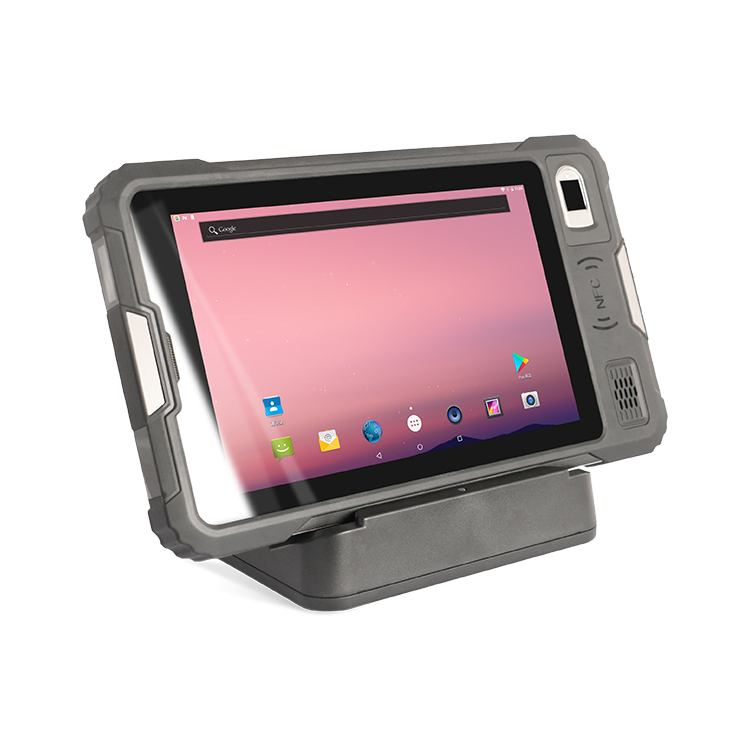
Applications in Production Workshops:
Copyright © 2015-2024 GuangZhou Jepower Technology Co.,Ltd.All Rights Reserved.
Friendly Links :
Android Pos Terminal